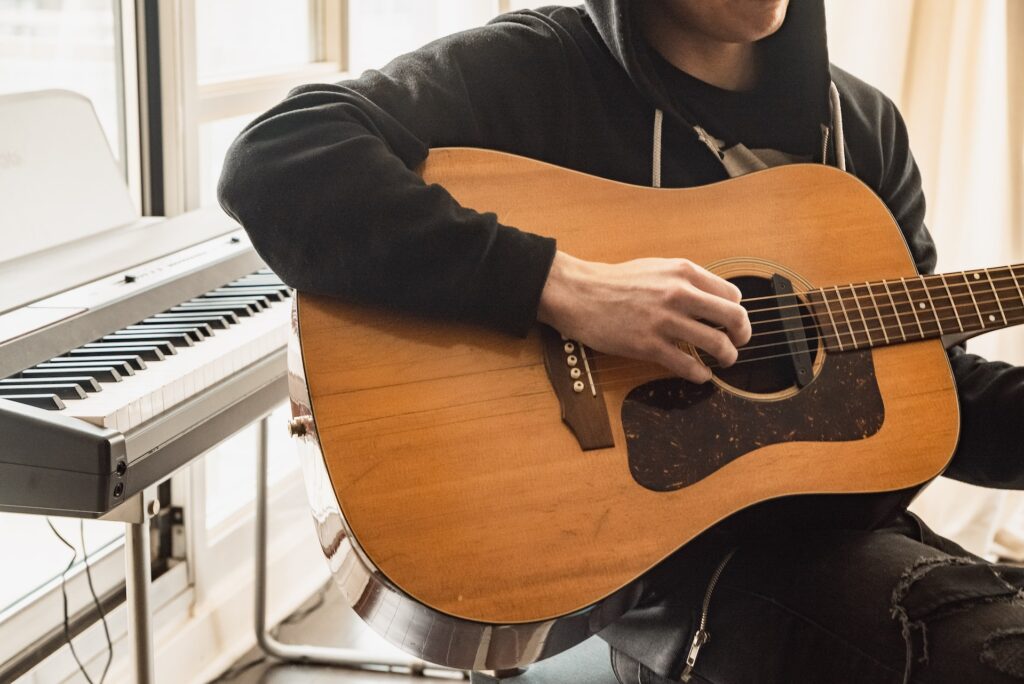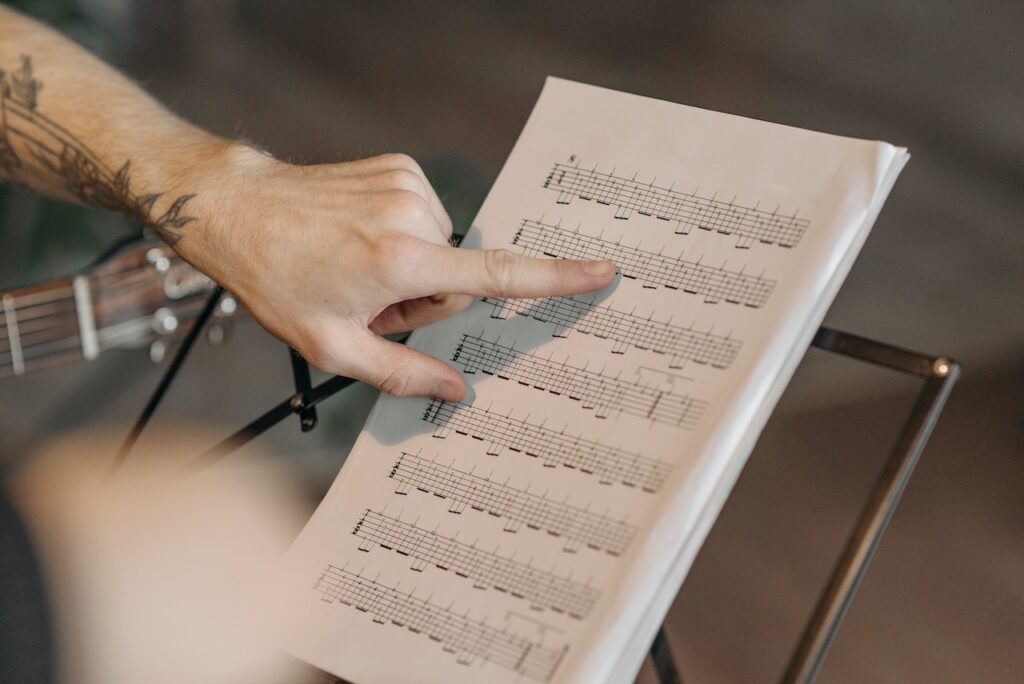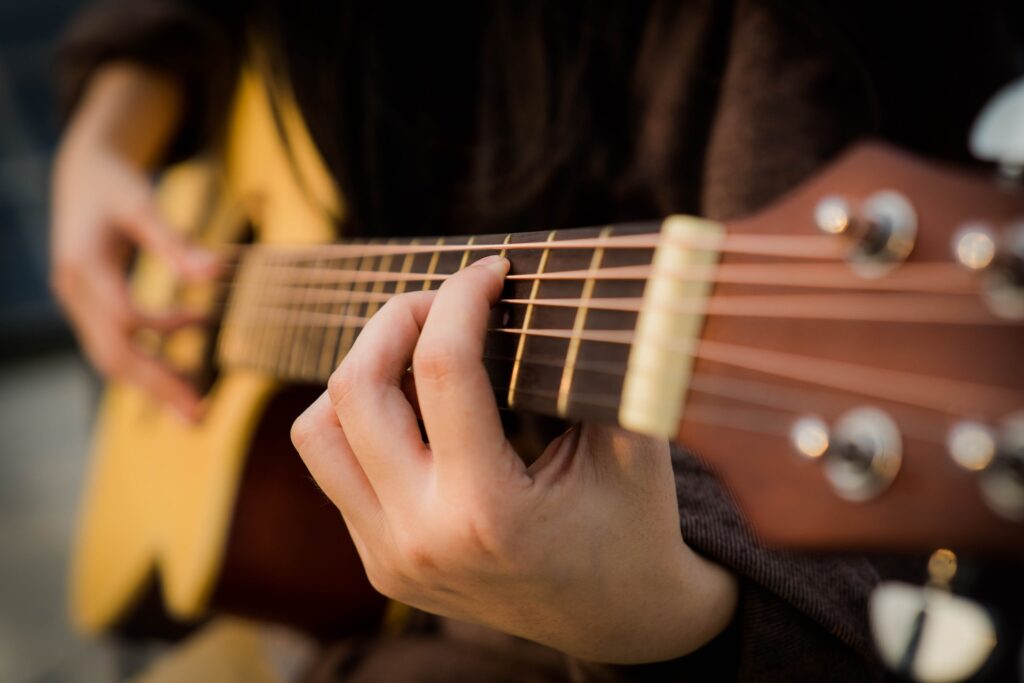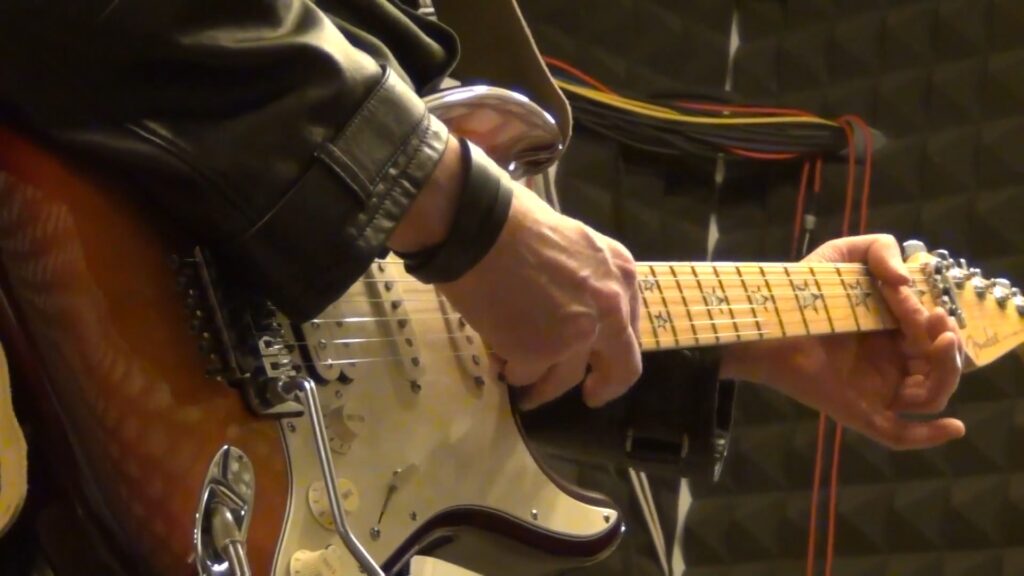For guitarists, whether beginners or experienced players, tablature (or tabs) is an invaluable tool for learning and playing music on the guitar. Unlike traditional sheet music, which uses standard notation, guitar tabs provide a simplified and guitar-specific method of notation. While tabs are relatively straightforward, there are common notation conventions within them that are important to understand. In this comprehensive guide, we’ll navigate the world of guitar tablature, shedding light on the common notation conventions and helping you become a more proficient tab reader and player.

The Basics of Guitar Tabs
Before delving into common notation conventions, let’s briefly touch on the foundational elements of guitar tabs:
- The Staff: A typical guitar tab consists of a set of horizontal lines, representing the guitar strings. These lines can range from four to seven, but the most common tablature has six lines, one for each string of the standard-tuned guitar.
- Numbers: Numbers placed on the lines indicate which fret to press and play on the respective string. “0” often represents an open string, while other numbers guide you to frets.
- String Indications: The order of the lines, from top to bottom, represents the strings of the guitar, starting with the high E string at the top and the low E string at the bottom.
Now, let’s explore the common notation conventions in greater detail.
1. Repeats and Endings
Guitar tabs often feature repeat signs that indicate specific sections of a song should be played more than once. The most common symbols for repeats are “||” (double bar lines), “:[number]” (indicating how many times to repeat), and “|:” (beginning of a repeated section). At the end of the repeated part, you’ll find “:|” (end of a repeated section).
2. Time Signatures
While less common in guitar tabs than in sheet music, you may come across time signatures. These are written as a fraction (e.g., 4/4) and provide information about the song’s timing and rhythm.
3. Chord Diagrams
In tabs, chord diagrams are used to indicate chords to be played at specific points in the song. They consist of a grid with dots, which represent finger positions on the fretboard. Learning to read chord diagrams is essential for playing chord progressions accurately.
4. Slides, Bends, and Other Techniques
Tabs use various symbols to represent different guitar techniques:
- Slides: Slides are depicted with a diagonal line connecting two notes. They signify that you should slide your finger from one fret to another without lifting it off the string.
- Bends: Bends are indicated by an upward arrow, a “b,” or the abbreviation “½” (for a half-step bend). These symbols show that you should bend the string at a specific fret to raise its pitch.
- Hammer-ons and Pull-offs: These techniques are usually shown with curved lines connecting two notes. A hammer-on indicates that you should play a note and then tap your finger on the next fret, while a pull-off indicates you should lift your finger off the string to sound the next note.
- Vibrato: Vibrato is represented by a wavy line or the letter “v” above a note, indicating that you should apply vibrato to that note.
5. Palm Muting
Palm muting is commonly used in rock and metal music. In tabs, it’s denoted by the letter “P” above the note you should palm mute. To execute a palm mute, lightly rest the palm of your hand on the strings near the bridge while picking the note.
6. Dynamics and Articulations
While guitar tabs are less detailed than sheet music, they sometimes include dynamic and articulation symbols. Common symbols include “p” (soft or quiet), “f” (loud), “s” (slap), and “h” (harmonic). These symbols provide some guidance on how to play certain notes.
7. Grace Notes
Grace notes, or small decorative notes, are sometimes used in tabs. They are typically smaller and not connected to the main notes. Grace notes are usually played quickly and add embellishments to the music.
8. Barre Chords and Capo Notations
Tabs may include indications for using barre chords or capos. Barre chords are depicted with a curved line over the fret number to show that you should bar all the strings at that fret. Capo notations indicate the fret at which a capo should be placed.
9. Fingerpicking Patterns
For fingerstyle guitarists, fingerpicking patterns may be notated in tabs. These patterns show which fingers to use on which strings.
10. Left-Hand and Right-Hand Fingerings
In more advanced tabs, you might encounter left-hand (fretting hand) and right-hand (picking hand) fingerings. These indicate which fingers to use on the fretboard and picking pattern details.
Now that we’ve explored these common notation conventions in guitar tabs, let’s discuss why they are essential and how they can help you become a better guitarist.
The Importance of Understanding Common Notation Conventions in Tabs
- Accuracy: Accurate interpretation of notation conventions ensures you play the right notes and execute techniques correctly.
- Communication: Tabs often use notation conventions to convey specific instructions. Knowing how to read and understand them is crucial for effective communication.
- Expressiveness: Understanding articulation, dynamics, and techniques allows you to infuse your playing with expression and emotion.
- Versatility: Proficiency in reading tabs with various notation conventions makes you a more versatile guitarist, capable of playing a wide range of music styles.
- Collaboration: When playing with other musicians, knowing notation conventions helps you follow and communicate musical ideas effectively.
How to Improve Your Tab Reading Skills
- Practice Regularly: The more you read and play tabs, the more familiar you’ll become with common notation conventions.
- Listen Actively: Use your ear to listen to the song you’re playing along with. It will help you understand the rhythm and dynamics even when they’re not explicitly notated.
- Study Specific Techniques: If you’re struggling with certain techniques (e.g., slides or bends), find resources and tutorials that focus on those techniques to improve your skills.
- Play Along with Music: Practicing along with the actual song can help you get a sense of how the tab’s notation conventions align with the music.
- Transcribe Music: Try transcribing songs you like from recordings into tabs. This exercise will strengthen your ear and tab reading skills.
Navigating guitar tablature is an essential skill for any guitarist. While tabs are generally easier to read than traditional sheet music, understanding common notation conventions within them is critical for precise and expressive playing. By mastering these conventions, you can expand your repertoire, communicate effectively with other musicians, and bring a new level of expression to your guitar playing. Practice regularly, actively listen to music, and seek out resources to improve your tab reading skills, and you’ll find that the world of guitar tabs becomes a rich and accessible resource for your musical journey.


